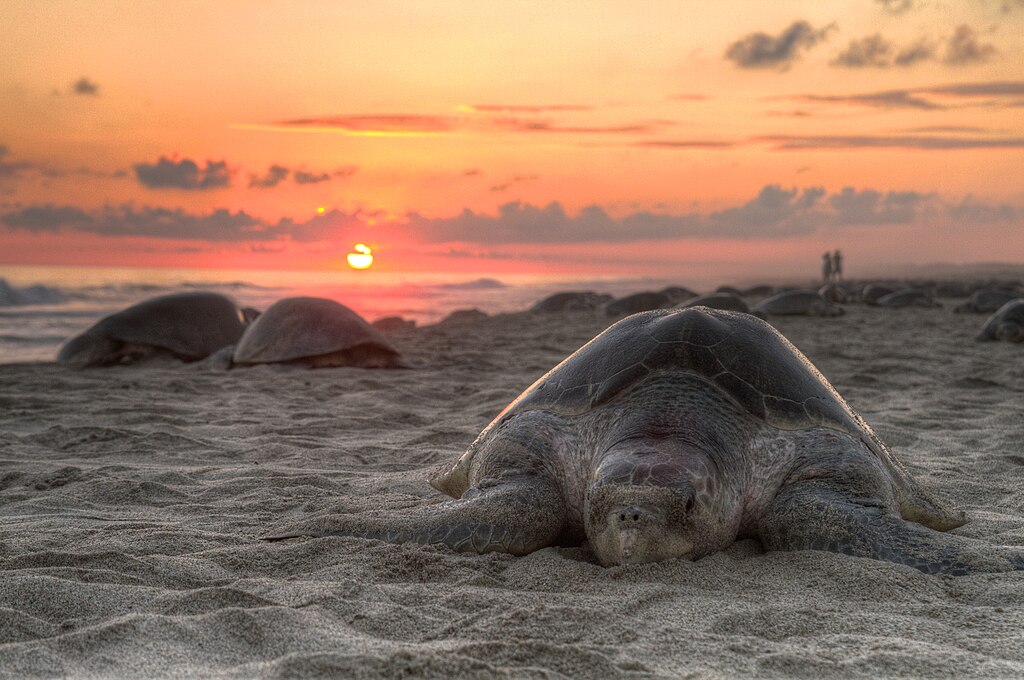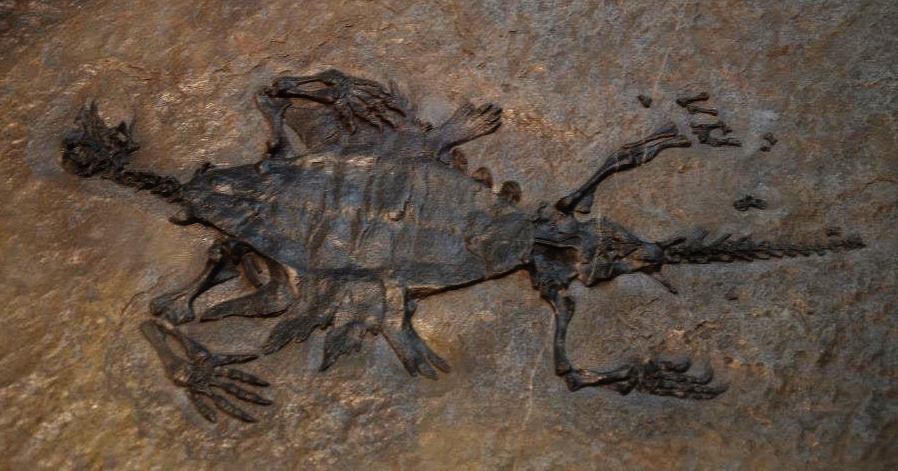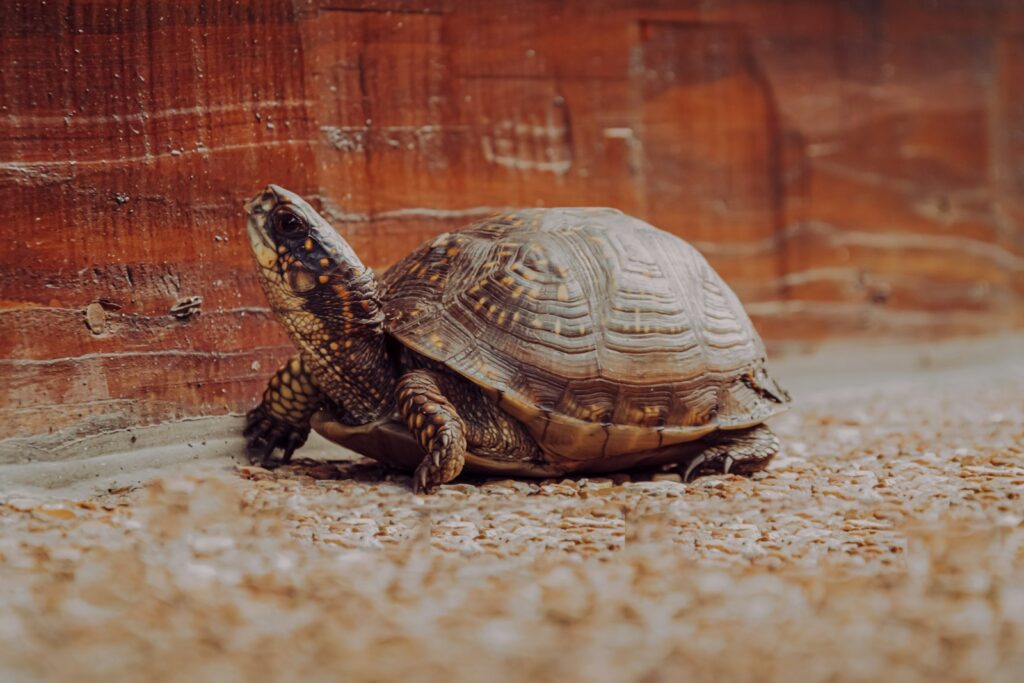The enigmatic turtle, with its distinctive shell and ancient lineage, represents one of the most recognizable and unique evolutionary designs in the vertebrate world. For centuries, scientists have been fascinated by these remarkable creatures and their mysterious origins. Fossil discoveries have provided crucial windows into the turtle’s evolutionary journey, revealing a complex and sometimes surprising path from their earliest ancestors to the diverse species we see today. This article explores the fascinating story told by turtle fossils, illuminating how paleontological evidence has shaped our understanding of turtle evolution and their place in the reptilian family tree.
The Earliest Turtle Ancestors

The story of turtle evolution begins over 260 million years ago during the late Permian period, before dinosaurs dominated the landscape. For decades, scientists struggled to identify clear turtle predecessors, creating what was known as the “turtle gap” in the fossil record. However, discoveries such as Eunotosaurus africanus from South Africa, dating to around 260 million years ago, have helped bridge this gap. This proto-turtle exhibited the beginnings of rib broadening – a critical first step toward shell development – while retaining many primitive reptilian features. Later discoveries, including Pappochelys rosinae (240 million years old) and Odontochelys semitestacea (220 million years old), have further illuminated the step-by-step evolution of the turtle body plan. These transitional fossils reveal that the distinctive turtle design didn’t appear suddenly but evolved gradually through a series of anatomical modifications over tens of millions of years.
Odontochelys: The Dawn of Turtle Evolution

Discovered in China in 2008, Odontochelys semitestacea represents one of the most significant findings in turtle evolutionary research. Dating to approximately 220 million years ago during the Late Triassic, this remarkable fossil showed a creature with a partially formed shell – possessing only the plastron (bottom shell) but lacking a complete carapace (top shell). Perhaps most surprisingly, Odontochelys retained teeth, a feature absent in all modern turtles who instead possess keratin beaks. This transitional form provided crucial evidence that the turtle’s characteristic shell did not evolve all at once, but rather in stages, with the plastron developing before the carapace. Odontochelys likely lived in shallow marine environments, suggesting that early turtle evolution may have had an aquatic component. This fossil revolutionized scientists’ understanding of turtle origins, demonstrating that shell evolution was more complex than previously believed and providing a crucial intermediate form between earlier reptiles and more modern turtle designs.
Proganochelys: The First Complete Shell

Approximately 210 million years ago during the Late Triassic period, Proganochelys quenstedti emerged as one of the earliest turtles with a fully formed shell. This primitive turtle, discovered in Germany, Thailand, and Greenland, represents a crucial evolutionary milestone in turtle development. Unlike modern turtles, Proganochelys couldn’t retract its head into its shell for protection – instead, it had a spiky neck and tail as defensive adaptations. The shell of Proganochelys, while recognizable as distinctly turtle-like, showed several primitive features including additional bones and scutes (the plates covering the shell) compared to modern species. Fascinatingly, like Odontochelys, Proganochelys still possessed teeth on the roof of its mouth, a characteristic lost in all living turtles. Standing approximately two feet long, this hefty herbivore demonstrates that by the Late Triassic, the fundamental turtle body plan had already been established, though significant evolutionary refinements would continue for millions of years afterward.
Shell Evolution: A Paleontological Perspective

The evolution of the turtle shell represents one of nature’s most remarkable structural innovations, and fossils have been essential in decoding this complex process. Contrary to earlier theories suggesting the shell formed from outgrowths of the backbone and ribs, fossil evidence now indicates a more intricate developmental pathway. The turtle carapace actually forms through the broadening of ribs and their fusion with dermal plates that develop within the skin. Eunotosaurus showed the first step with widened ribs, while Pappochelys exhibited ribs beginning to expand along with the development of gastralia (belly ribs) that would eventually form the plastron. By the time of Odontochelys, the plastron was fully formed while the carapace remained incomplete. Proganochelys finally displayed both fully developed upper and lower shells. This fossil sequence reveals that the shell evolved not as external armor being added to a normal reptilian body, but through a fundamental reorganization of the skeletal structure, with ribs expanding outward rather than curving around to form the rib cage as in other vertebrates. This evolutionary innovation required dramatic changes to the turtle’s entire body plan, including the unique position of the shoulder blades inside the ribcage rather than outside as in all other tetrapods.
The Great Turtle Split: Cryptodires and Pleurodires

One of the most significant evolutionary divergences in turtle history occurred approximately 175 million years ago during the Middle Jurassic period, creating the two major turtle lineages that persist today. Fossils reveal the split between the cryptodires (hidden-necked turtles) and pleurodires (side-necked turtles), groups distinguished primarily by how they retract their heads into their shells. Cryptodires, which comprise most living turtle species, pull their heads straight back into their shells by folding their necks in a vertical S-curve. Pleurodires, by contrast, bend their necks horizontally to tuck their heads sideways under the edge of their shells. Early fossils showing these distinct neck-folding mechanisms include Kayentachelys aprix (a primitive cryptodire from Arizona) and Notoemys laticentralis (an early pleurodire from Argentina). This fundamental division has persisted for over 175 million years, with each lineage developing distinct anatomical adaptations while maintaining the basic turtle body plan. The fossil record documents how these two groups radiated into different habitats and ecological niches throughout the Mesozoic and Cenozoic eras, with cryptodires achieving greater global diversity while pleurodires became largely restricted to the Southern Hemisphere.
Marine Adaptations: The Rise of Sea Turtles

The evolutionary journey of sea turtles represents one of the most dramatic adaptations in turtle history, transforming land-dwelling reptiles into highly specialized ocean navigators. Fossil evidence indicates that sea turtles evolved from freshwater ancestors approximately 120 million years ago during the Early Cretaceous period. Santanachelys gaffneyi, a 110-million-year-old fossil from Brazil, represents one of the earliest known sea turtles, already showing adaptations for marine life including paddle-like limbs, though retaining some primitive features. By the Late Cretaceous, fully marine forms like Archelon and Protostega had evolved, reaching enormous sizes – Archelon grew up to 15 feet long with a 20-foot flipper span, making it the largest turtle ever discovered. These massive sea turtles possessed reduced shells compared to their body size, as the complete shell became less necessary for protection in open ocean environments and would have increased drag while swimming. The fossil record beautifully documents the gradual transformation of turtle limbs from feet to flippers, shells becoming lighter and more streamlined, and salt glands developing to process seawater. These adaptations evolved convergently with similar modifications in marine reptiles like ichthyosaurs and plesiosaurs, demonstrating how different lineages can develop comparable solutions to the challenges of marine life.
Giant Prehistoric Turtles

The fossil record reveals that throughout evolutionary history, turtles have occasionally reached truly staggering dimensions that dwarf their modern relatives. Perhaps the most spectacular example is Archelon ischyros from the Late Cretaceous seas of North America, which reached lengths of up to 15 feet with a flipper span of approximately 20 feet. This marine giant had a reduced shell structure consisting of a leathery carapace supported by a frame of thickened ribs rather than a solid shell, similar to today’s leatherback sea turtle but on a much grander scale. On land, the Miocene epoch (approximately 23-5 million years ago) produced Stupendemys geographicus, a freshwater turtle from South America that reached shell lengths exceeding 10 feet and weighed over 2,500 pounds – nearly twenty times larger than the largest freshwater turtles alive today. Another remarkable giant was Carbonemys cofrinii from Colombia, which lived about 60 million years ago and possessed a shell roughly the size of a small car and powerful jaws capable of crushing large prey. These prehistoric giants evolved in response to specific ecological conditions, including abundant food resources, few predators once reaching adult size, and in some cases, the absence of large mammalian competitors following the dinosaur extinction.
Turtle Survival Through Mass Extinctions

The fossil record demonstrates that turtles possess an extraordinary resilience that has allowed them to endure multiple global catastrophes that eliminated vast swaths of Earth’s biodiversity. Most notably, turtles survived the Cretaceous-Paleogene (K-Pg) extinction event approximately 66 million years ago that wiped out the non-avian dinosaurs and approximately 75% of all species on Earth. Research suggests that turtles’ survival through this cataclysm may be attributed to several adaptations, including their ability to hold their breath for extended periods, their capacity to hibernate or estivate during harsh conditions, and their omnivorous feeding habits that allowed dietary flexibility when food sources became scarce. Fossil evidence indicates that freshwater turtles fared better than their marine counterparts during this extinction, with several marine lineages disappearing entirely while freshwater forms experienced less dramatic turnover. Turtles also weathered the Eocene-Oligocene extinction event around 34 million years ago, which was triggered by global cooling and habitat changes. The turtle’s basic body plan remained remarkably consistent throughout these tumultuous periods, with the protective shell proving to be an extraordinarily successful adaptation across vastly different environmental conditions. This evolutionary staying power makes turtles one of the most enduring vertebrate designs in Earth’s history.
Meiolania: The Horned Turtles

Among the most bizarre turtle lineages revealed by the fossil record are the meiolaniids, often called “horned turtles,” which flourished across the Southern Hemisphere after the dinosaur extinction until surprisingly recent times. Meiolania platyceps, the most well-known species, lived in Australia from about 40,000 to 1 million years ago and possessed a truly extraordinary appearance. This massive turtle, with a shell length of approximately 8 feet, featured a skull adorned with large curved horns projecting from the sides of its head and smaller horns on its snout, giving it a dragon-like appearance. Its tail was equally unusual, protected by an armored sheath with bony club-like projections at the end, similar to the tails of ankylosaur dinosaurs. Unlike modern turtles, Meiolania could not retract its head into its shell, instead relying on its horns and armor for protection. Remarkably, these specialized turtles survived on isolated islands in the South Pacific until just a few thousand years ago, with evidence suggesting that human arrival may have contributed to their final extinction. The meiolaniids represent a fascinating example of convergent evolution, independently evolving horns and tail clubs similar to those seen in unrelated dinosaurs like ceratopsians and ankylosaurs.
Molecular vs. Morphological Evidence: Resolving Turtle Origins

One of the most contentious debates in turtle evolutionary studies involves determining their precise position within the reptile family tree – a controversy where fossil evidence and molecular data have sometimes yielded conflicting results. Traditionally, based on morphological and fossil evidence, turtles were classified as anapsids – reptiles with skulls lacking temporal openings – suggesting they diverged early from other reptilian lineages before the evolution of diapsid reptiles (those with two temporal openings, including lizards, snakes, crocodilians, and birds). However, molecular studies analyzing DNA sequences consistently place turtles firmly within the diapsid group, most likely related to archosaurs (the group containing crocodilians and birds) or sometimes closer to lepidosaurs (lizards and snakes). Recent fossil discoveries, particularly of Pappochelys and Eunotosaurus, have helped reconcile these conflicting views by showing these proto-turtles possessed diapsid skull characteristics, suggesting turtles evolved from diapsid ancestors but subsequently lost their temporal openings – a case of secondary loss rather than primitive retention. This demonstrates how fossils can provide crucial context for interpreting molecular data, revealing that evolutionary relationships can be more complex than they initially appear, with features sometimes being lost or modified beyond easy recognition.
Convergent Evolution in Turtle History

The fossil record of turtles provides numerous fascinating examples of convergent evolution – the independent development of similar traits in unrelated lineages in response to similar environmental pressures. Perhaps the most striking example involves the repeated evolution of the softshell body plan. Fossil evidence reveals that the flattened, pancake-like shell with reduced ossification and leathery covering evolved independently at least three times in turtle history: in the Trionychia (modern softshell turtles), the extinct Cretaceous Nanshiungchelyidae, and potentially in some early stem turtles. Similarly, the streamlined, hydrodynamic body form of sea turtles evolved independently in several lineages, including the living chelonioids and the extinct protostegids and thalassochelydians. Shell reduction or loss has occurred multiple times, notably in the leatherback sea turtle lineage and various softshell groups. Even specialized feeding adaptations show convergence, with crushing jaws for shellfish consumption evolving independently in several turtle groups. The repeated emergence of these features throughout turtle evolutionary history demonstrates how similar ecological pressures can produce remarkably similar adaptations in distantly related groups, while the persistence of the fundamental turtle body plan highlights the evolutionary success of their basic design.
Recent Fossil Discoveries Changing Our Understanding

In recent decades, a series of revolutionary fossil discoveries has dramatically reshaped scientists’ understanding of turtle evolution, filling critical gaps in the fossil record and answering long-standing questions. The 2015 description of Pappochelys rosinae from Middle Triassic rocks in Germany provided a crucial missing link between earlier proto-turtles like Eunotosaurus and more derived forms like Odontochelys. With its expanded ribs and partially formed plastron, Pappochelys confirmed theories about the gradual evolution of the turtle shell. Similarly, the 2018 discovery of Eorhynchochelys sinensis from China complicated the picture in fascinating ways, as this 228-million-year-old fossil possessed a turtle-like beak but lacked a shell, suggesting that various turtle characteristics evolved at different rates and not necessarily in the sequence previously assumed. Kayentachelys, from the Early Jurassic of Arizona, helped clarify the early divergence of the major turtle lineages. The 2020 description of a nearly complete Stupendemys specimen from South America revealed male specimens possessed massive horned shells for combat, similar to modern tortoises but on a much larger scale. Most recently, discoveries from the Intertrappean beds of India have yielded fossils showing the rapid diversification of turtles following the K-Pg extinction, illuminating how these resilient reptiles seized ecological opportunities after the dinosaur extinction.
Conservation Insights from the Fossil Record

The turtle fossil record offers valuable perspective for modern conservation efforts, providing evidence of past responses to climate change, habitat alterations, and extinction pressures. By examining turtle diversity and distribution throughout geological time, paleontologists have documented that today’s turtle fauna represents only a fraction of their historical diversity, with many unique lineages lost over the past few million years. For instance, giant tortoises once inhabited every continent except Antarctica, not just the isolated islands where they survive today. The fossil record reveals that turtle species have historically shifted their ranges in response to climate changes, moving northward during warming periods and southward during cooling – information that helps predict how modern species might respond to current climate change if given sufficient time and migration corridors. Disturbingly, paleontological data indicates that current turtle extinction rates far exceed background rates seen in the fossil record, with human impacts causing turtle declines at a pace unprecedented in their evolutionary history.



